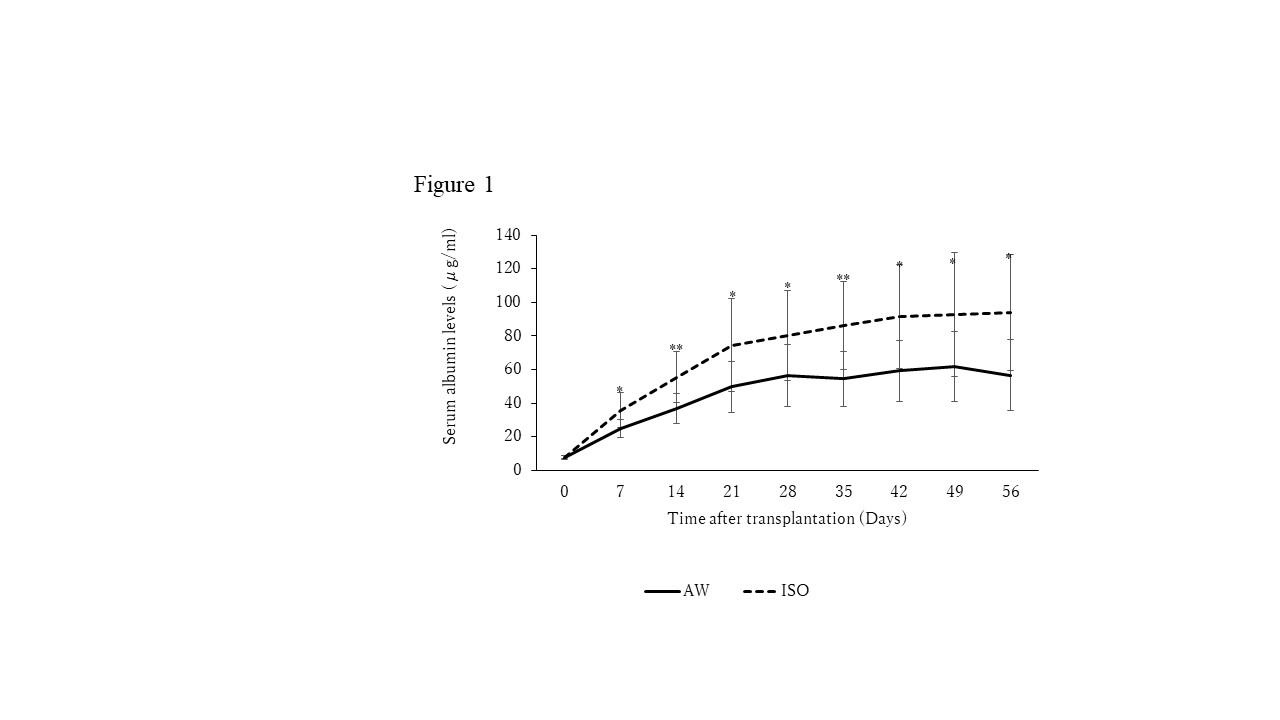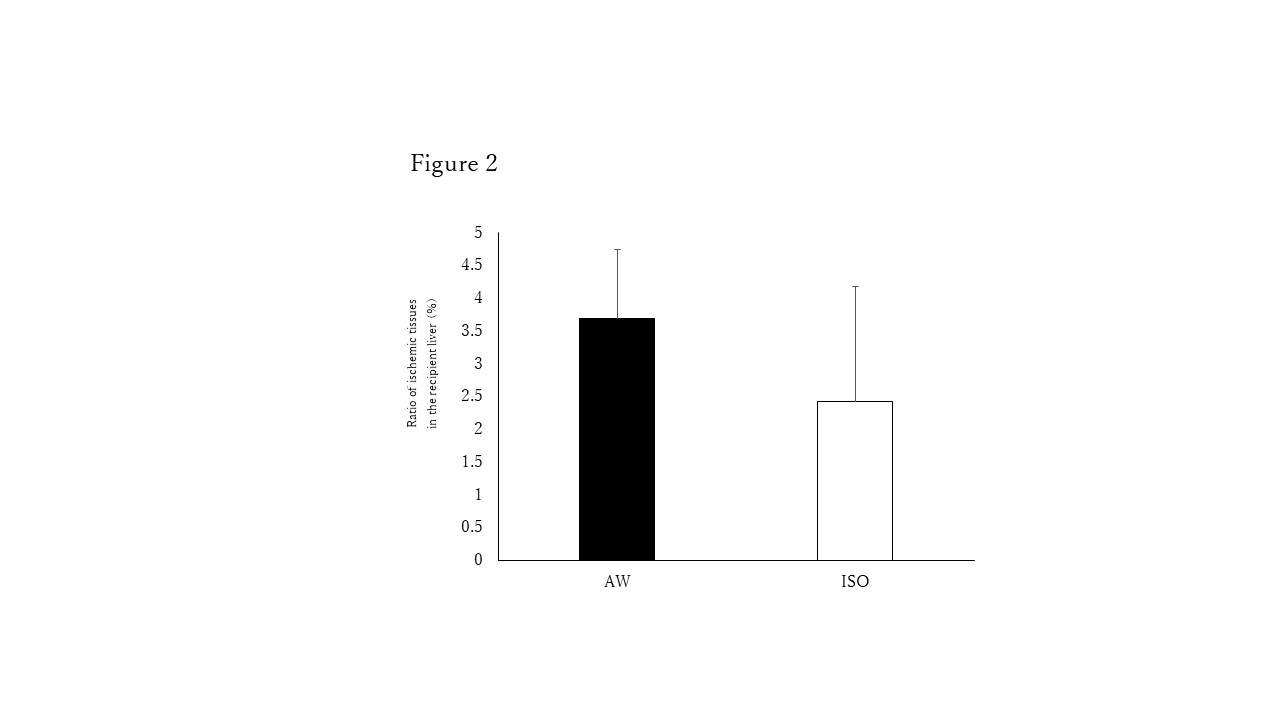The effect of short-term inhalation of isoflurane on the outcomes of intraportal hepatocyte transplantation
Hiroyasu Nishimaki3, Yoshikatsu Saitoh3, Akiko Inagaki1, Yasuhiro Nakamura2, Takehiro Imura1, Ibrahim Fathi1, Hiroki Yamana3, Kazuo Ohashi4, Shigehito Miyagi3, Takashi Kamei3, Michiaki Unno3, Masafumi Goto1.
1Tohoku University Graduate School of Medicine, Division of Transplantation and Regenerative Medicine, Sendai, Japan; 2Tohoku Medical and Pharmaceutical University, Division of Pathology, Faculty of Medicine, Sendai, Japan; 3Tohoku University Graduate School of Medicine, Department of Surgery, Sendai, Japan; 4Osaka University, Graduate School of Pharmaceutical Sciences, Osaka, Japan
Introduction: Liver transplantation is currently established as a treatment for endo-stage liver disease. However, this treatment is considered too invasive for those patients. Hepatocyte transplantation (HTx), which is less invasive in comparison to liver transplantation, has been expected to serve as an alternative therapy to liver transplantation. However, the outcomes of HTx are still far from satisfactory, and it is well known that there is a large discrepancy between the experimental results of animal models and clinical outcomes of HTx. Of particular note, clinical HTx is only performed without general anesthesia, while inhalation anesthetics are usually used in animal experiments. Isoflurane, which is one of the most widely used inhalation anesthetics in animal experiments, is known to have a strong vasodilatory effect, portal pressure inhibitory effect, and cytoprotective effect against cytokine-induced injury. Therefore, we hypothesized that isoflurane may be a possible reason for the discrepancy between the results of animal experiments and the clinical outcomes of HTx.
Methods: F344/NSLc rat hepatocytes were isolated. Isolated hepatocytes (1.0×10⁷ cells) were transplanted to analbuminemic rats with (ISO group) and without (AW group) isoflurane. These analbuminemic rats had a syngeneic background to the donor rats. The serum albumin, AST, ALT, LDH levels and several inflammatory mediators in the recipient rats were analyzed. Immunohistochemical staining and ex vivo imaging of transplanted hepatocytes were also performed.
Results: The serum albumin levels of the ISO group were significantly higher in comparison to the AW group (p<0.05) (Figure 1). The serum AST, ALT, LDH levels of the ISO group were significantly suppressed in comparison to the AW group (p<0.0001, respectively). The serum levels of IL-1β (p<0.01), IL-10 (p<0.01), IL-18 (p<0.01), MCP-1 (p<0.05), RANTES (p<0.01), Fractalkine (p<0.01), and LIX (p<0.05) in the ISO group were significantly downregulated in comparison to the AW group. The ischemic regions of the recipient livers, which were easily detected in the livers of both groups, tended to be more evident in the AW group (3.69±1.05%) in comparison to the ISO group (2.42±1.76%) (Figure 2).
Conclusions: This study showed that the anti-inflammatory effects of isoflurane could efficiently contribute to hepatocyte engraftment. According to the detailed analyses in this study, the anti-inflammatory effects, rather than vasodilatory effects, of isoflurane appeared to be the main mechanism of the abovementioned benefits. Isoflurane may at least in part be a reason for the discrepancy between the results of animal experiments and the clinical outcomes of HTx.



right-click to download
